
Otto Karl Robert Wernicke was a German actor. He is best known for his role as police inspector Karl Lohmann in the two Fritz Lang films M and The Testament of Dr. Mabuse.
Paul Victor Ernst Dahlke was a German stage and film actor.
Rudolf Ernst Paul Schündler was a German actor and director. He played "Karl" in The Exorcist (1973).
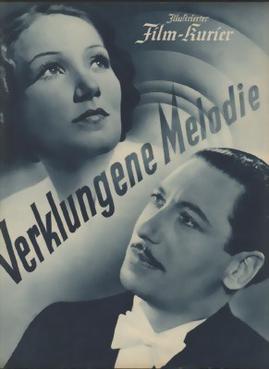
Faded Melody is a 1938 German drama film directed by Viktor Tourjansky and starring Brigitte Horney, Willy Birgel and Carl Raddatz. The film was made by Germany's largest studio of the era UFA. It was shot at the Babelsberg Studios in Potsdam and on location in French Algeria, New York City and Berlin. The film's sets were designed by the art directors Hermann Asmus and Max Mellin. It premiered at Berlin's Gloria-Palast.

Target in the Clouds is a 1939 German drama film directed by Wolfgang Liebeneiner and starring Albert Matterstock, Leny Marenbach and Brigitte Horney. It was based on a novel by Hans Rabl. The film portrays the struggles of the fictional German aviation pioneer Walter von Suhr, an officer in the pre-First World War German army who saw the potential for military aircraft.

The Court Concert is a 1936 German historical romantic comedy film directed by Detlef Sierck, and starring Mártha Eggerth, Johannes Heesters, and Kurt Meisel. It was made by the largest German studio UFA, based on Das kleine Hofkonzert. It is part of a number of operetta films produced during the 1930s. The film was shot at the Babelsberg Studios in Berlin with sets designed by the art director Fritz Maurischat. A separate French-language version was also released.
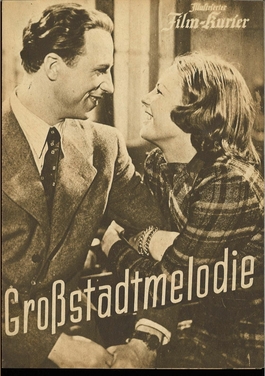
Melody of a Great City is a 1943 musical drama film directed by Wolfgang Liebeneiner and starring Hilde Krahl, Werner Hinz and Karl John. A young woman moves to Berlin to work as a press photographer.

Maria Ilona is a 1939 German historical drama film directed by Géza von Bolváry and starring Paula Wessely, Willy Birgel, and Paul Hörbiger. The film is set in Austria during the reign of Ferdinand I. It is an adaptation of Oswald Richter-Tersik's novel Ilona Beck.
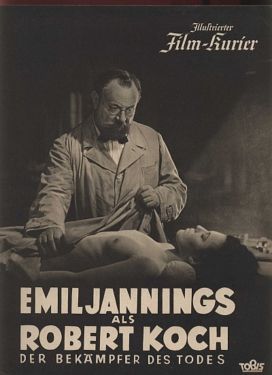
Robert Koch is a 1939 Nazi propaganda film directed by Hans Steinhoff and starring Emil Jannings, Werner Krauss and Viktoria von Ballasko. The film was a biopic of the German pioneering microbiologist Robert Koch (1843–1910). It was shot at the Johannisthal Studios in Berlin and premiered at the city's Ufa-Palast am Zoo. The film was made by the Tobis Film company, and was also distributed in the United States by the largest German studio UFA.

By a Silken Thread is a 1938 German drama film directed by Robert A. Stemmle and starring Willy Fritsch, Carl Kuhlmann and Käthe von Nagy. The film was intended to be an exposure of "crooked Jewish capitalists" in line with Nazi racial policy of the era. It was shot at the Babelsberg Studios of UFA in Potsdam. The film's sets were designed by the art director Otto Hunte.

Back Then is a 1943 German drama film directed by Rolf Hansen and starring Zarah Leander, Hans Stüwe, and Rossano Brazzi. The film's sets were designed by Walter Haag. It was made at the Babelsberg Studio, by Universum Film AG, Germany's largest film company. It was Leander's final film of the Nazi era, as she returned to Sweden shortly afterwards. This was a blow for the German film industry, as she was the most popular and highest-paid star. Leander's next film was not for another seven years, when she made a comeback in Gabriela (1950).
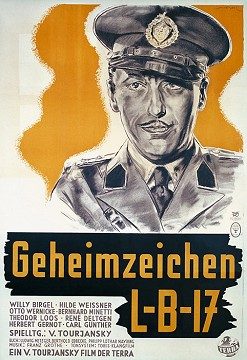
Secret Code LB 17 is a 1938 German thriller film directed by Victor Tourjansky and starring Willy Birgel, Hilde Weissner and Bernhard Minetti. It was made at the Babelsberg Studios outside Berlin. The film's sets were designed by the art directors Karl Böhm and Erich Czerwonski.

Freight from Baltimore is a 1938 German drama film directed by Hans Hinrich and starring Hilde Weissner, Attila Hörbiger, and Hans Zesch-Ballot. Interiors were shot at the Tempelhof Studios in Berlin. The film's sets were designed by the art directors Carl Böhm and Erich Czerwonski. It was partly shot on location at the Port of Hamburg.
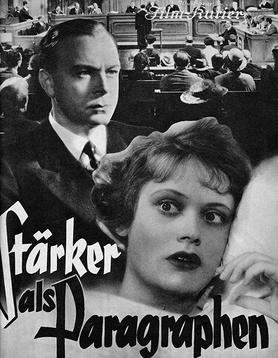
Stronger Than Regulations is a 1936 German mystery film directed by Jürgen von Alten and starring Paul Hartmann, Karl Hellmer and Manja Behrens. It was shot at the Grunewald Studios in Berlin. The film's sets were designed by the art directors Otto Guelstorff and Hans Minzloff.

The Irresistible Man is a 1937 German romantic comedy film directed by Géza von Bolváry and starring Anny Ondra, Hans Söhnker, and Trude Hesterberg.
Peter Ludwig Wilhelm Elsholtz was a German stage and film actor.

Serap Güler is a German politician of the Christian Democratic Union (CDU). She has been a Member of the German Bundestag since 2021, representing the Leverkusen – Cologne IV district.
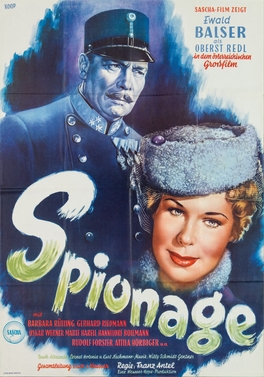
Espionage is a 1955 Austrian historical spy drama film directed by Franz Antel and starring Ewald Balser, Barbara Rütting and Gerhard Riedmann. It was shot at the Sievering Studios and on location in Vienna. The film's sets were designed by the art director Felix Smetana. It was based on the real story of Alfred Redl, an officer serving with Austrian Military Intelligence who was also secretly spying for the hostile Russian Empire before the First World War.

Dance on the Volcano is a 1938 German historical musical comedy film directed by Hans Steinhoff and starring Gustaf Gründgens, Sybille Schmitz and Ralph Arthur Roberts. It was shot at the Johannisthal Studios in Berlin. The film's sets were designed by the art director Rochus Gliese. A light-hearted costume film, the production was a significant departure for both its director, best known for his Nazi-supporting propaganda films, and its star Gründgens, celebrated as a classical actor.
















